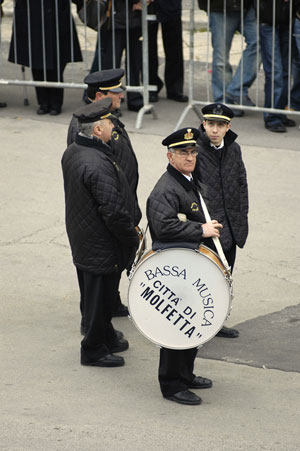





During the Lenten processions, several funeral marches are performed. They include the so-called “u conzasiegge”, inspired by the chair-repairer’s cries. This heartrending march, composed by the musician Vincenzo Valente in 1857, is still performed during the highly impressive night procession of the Dead Christ.
The same author wrote the music for Lo sventurato, a funeral march dated to 1888 and played during the procession of Our Lady of Sorrows on Passion Friday.
The march Dolor, attributed to the local author Saverio Calò, was composed in 1897 and is performed when the Pieta statue leaves the church of Purgatorio on Holy Saturday.
Some works by famous composers are also performed, such as Gioacchino Rossini’s Stabat Mater, played both during the final epilogue of the procession of Our Lady of Sorrows and at the end of the procession rituals of the Pieta statue. Marcia del Palmieri, by an unknown author, is played while the statue representing Christ dead on the cross is borne back to the church.
Among the typical motifs played during the Lenten rituals of Molfetta, the so-called Ti-tè, by an unknown author, deserves a key-position. Some have defined it “a lament of Oriental origins” and for its musical beauty the maestro Riccardo Muti has asked its score.
The performance group is composed of flute, trumpet, drum, and bass drum.